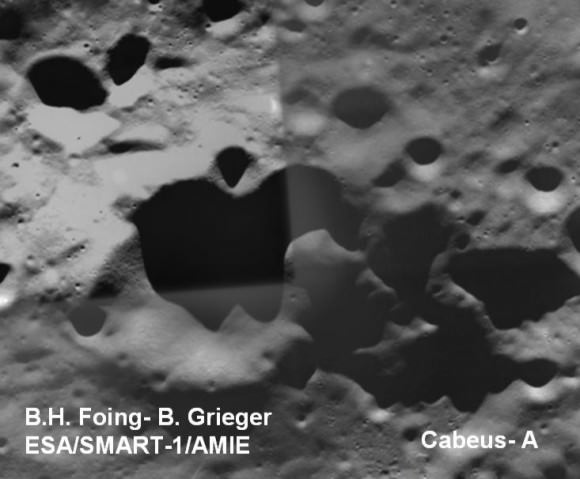The camera is made up of a CCD controller for [...]
Full story at http://spacefellowship.com/2009/09/30/worlds-most-sensitive-astronomical-camera/
Advertise here in this prominent space for only $100 per month, your advertisement will appear in all of the post pages available across this website.
Check out the link about for more advertisement options provided, get your message across!

You better watch out,
You better bookmark,
You better ready your pics, cos I'm tell you why...
Snapshock is coming to town!!

全香港其中一間最具規模的海味網上專門店。專營零售燕窩、鮑魚、海參、魚翅、花膠、元貝、冬蟲草,極具食療價值。此外亦提供各項中藥海味烹調方法,以導出各食品的固本培元及補生之效。
客戶服務熱線:3158 1276
傳真熱線:3158 1416
電郵查詢:info@starrygift.com

Full story at http://spacefellowship.com/2009/09/30/worlds-most-sensitive-astronomical-camera/
Full story at http://spacefellowship.com/2009/09/30/arecibo-observatory-uniquely-powerful-for-detecting-near-earth-objects/
Full story at http://spacefellowship.com/2009/09/30/new-space-station-crew-launches-in-orbit-news-conference-set/
If you thought the Lagoon yesterday was pretty, then reset your awe-meter. Check. This. Out.

D’ya like that? Huh? Do ya? Had enough? No? Then check THIS out!

Jeebus. Click either to brobdingnangate. In fact, you can get massively huge versions here and here. We’re talking 30 and 40 Mb each, so be ye fairly warned, says I.
Those magnificent images are of the galaxies NGC 4402 and NGC 4522, respectively, as seen by the Hubble Space Telescope’s Advanced Camera for Surveys (from before the recent repair mission). They’re both spiral galaxies in the Virgo Cluster, the nearest large collection of galaxies to us, roughly 60 million light years from Earth.
If they look funny to you, then good! The Virgo Cluster is massive, and has a lot of gravity. The galaxies bound to it are moving like bees surrounding a hive, each in its own orbit going every which way. These galaxies are screaming through the cluster at speeds of 10 million kilometers per hour, a truly terrifying velocity.
There is an ethereal gas distributed between the galaxies called the intercluster medium. It’s incredibly thin, but over the size of a galaxy — especially when said galaxy is barreling through it at such tremendous speed — the gas can exert significant pressure, called ram pressure. The pressure is actually blowing the galaxies’ internal gas clouds out into the cluster itself, making them look a little bit like pickup trucks driving down a highway with dirt copiously pouring out the beds*. This is especially obvious in NGC 4522 (the lower one), where you can see bright blue splotches, which are regions of intense star formation, along with dark lanes of dust actually above the galactic plane.
In NGC 4022, you can see how the ram pressure is roiling up the dust in the galaxy, and also blowing it back, though apparently not as briskly as in the other galaxy.
These pictures are incredible. Poke around them; you can see amazing detail in the galaxies themselves, as well as hundreds, maybe thousands of background galaxies.
It’s been a while since we’ve seen deep, glorious pictures of spiral galaxies from Hubble. Now that ACS is working again, and it’s being joined by the equally powerful Wide Field Camera 3, we’ll be seeing lots more of these. Get used to it.
Image credits: NASA and ESA.
Full story at http://blogs.discovermagazine.com/badastronomy/2009/09/30/two-hubble-stunners/
Full story at http://spacefellowship.com/2009/09/28/lcross-team-changes-target-crater-for-impact/
Full story at http://spacefellowship.com/2009/09/28/messengers-neutron-spectrometer-zeros-in-on-mercurys-crust/
Full story at http://spacefellowship.com/2009/09/29/floundering-el-ninos-make-for-fickle-forecasts/
 I know I said that NASA’s LCROSS impactor was going to smack into the crater Cabeus-A on October 9th, but NASA changed their minds: the new target is the crater Cabeus proper. New analysis of data from other probes indicates that Cabeus has more hydrogen locked up in the regolith than Cabeus-A, and in fact has the highest hydrogen concentration in the south polar region. As an added bonus, the topography of the crater is such that a valley will let sunlight hit the plume of ejected dust sooner than it would have had they stayed with Cabeus-A as a target. That gives scientists more time to look at the ejecta, and earlier is better because the plume will be denser too.
I know I said that NASA’s LCROSS impactor was going to smack into the crater Cabeus-A on October 9th, but NASA changed their minds: the new target is the crater Cabeus proper. New analysis of data from other probes indicates that Cabeus has more hydrogen locked up in the regolith than Cabeus-A, and in fact has the highest hydrogen concentration in the south polar region. As an added bonus, the topography of the crater is such that a valley will let sunlight hit the plume of ejected dust sooner than it would have had they stayed with Cabeus-A as a target. That gives scientists more time to look at the ejecta, and earlier is better because the plume will be denser too.
I hope this is the right choice for NASA, but I have to say I’m impressed they can change their plans this late in the game. Let’s hope they see some water!
Full story at http://blogs.discovermagazine.com/badastronomy/2009/09/29/change-of-address-for-lcross/
Full story at http://spacefellowship.com/2009/09/26/part-four-anousheh-ansari-and-her-10-million-purse/
Full story at http://spacefellowship.com/2009/09/27/picture-of-the-day-to-fly-free-in-space/
Full story at http://spacefellowship.com/2009/09/28/astronomy-question-of-the-week-what-is-dark-energy/
The spacecraft MESSENGER is just three days away from its third encounter with Mercury. The past two have been nothing short of frakkin’ amazing, so I’m really looking forward to this final pass. Even though it was 1.3 million kilometers away from the tiny planet on the 25th, it snapped this serene shot:

I love moody astronomical pictures. Here, a crescent Mercury sits in the inky black as MESSENGER screams down on it at 3.3 km/sec (2 miles per second). ON this final pass, the spacecraft will slow enough that it will be able to enter orbit around Mercury in March 2011. The nominal lifespan of the mission will be for one solid (Earth) year of observations, and will map the planet with 18 meter resolution. That’s the size of a house.
That is so going to rock. But that’s 1.5 years away, and we’re still waiting on this third pass. I hope to be able to post pix when they come in, but I’m traveling to the UK for TAM London not long after, so we’ll see. But you can always keep an eye on the MESSENGER website, as well as Emily Lakdawalla’s blog. They’ll be up-to-date… especially, if I know her, Emily, who will be spending the flyby looming over her keyboard and hitting "refresh" every 30 seconds or so.
Full story at http://blogs.discovermagazine.com/badastronomy/2009/09/27/messenger-three-days-out-from-mercury/
Full story at http://spacefellowship.com/2009/09/26/a-prototype-detector-for-dark-matter-in-the-milky-way/
Full story at http://spacefellowship.com/2009/09/26/picture-of-the-day-largest-moon-in-the-solar-system/
Full story at http://spacefellowship.com/2009/09/26/part-four-anousheh-ansari-and-her-10-million-purse/
The spot where NASA’s LCROSS spacecraft will impact the Moon on October 9 has been released by astronomers with the European Space Agency:

The impact site is the crater Cabeus-A, the largish crater to the left of center. The resolution of the image is about 50 meters/pixel, and the field of view is about 50 km (30 miles) across. The crater is near the Moon’s south pole, and the bottom is permanently in shadow. See the shadow across the crater? As the Moon spins and orbits the Earth, that shadow never lifts, but instead moves around the crater floor like the hand of a celestial clock.
We know there is water all over the Moon in small quantities, but is there a lake of frozen water under the crater’s dusty floor? When LCROSS impacts, we may find out.
This image was taken by SMART-1, an ambitious ESA spacecraft that orbited the Moon for nearly two years. Its ultimate fate? It too impacted the lunar surface in September 2006. While that impact wasn’t meant to hunt for water, it did kick up some dust, and made a flash bright enough to be detected from Earth. Its mission was a big success, and its demise was a harbinger for things to come on October 9.
Image credit: B.Grieger, B.H. Foing & ESA/SMART-1/ AMIE team
Full story at http://blogs.discovermagazine.com/badastronomy/2009/09/26/image-of-future-lcross-lunar-impact-site/

ESA's SMART-1 team has released an image of the future impact site of NASA?s Lunar Crater Observation and Sensing Satellite (LCROSS). The SMART-1 team searched through their database to find images of Cabeus A, where LCROSS will search for water ice by making two impacts into this crater at the lunar south pole. The impacts are scheduled for 11:30 and 11:34 am UT on 9 October 2009. This image was taken four years ago by SMART-1, a spacecraft that ended its mission in 2006 by deliberately crashing to the Moon, similar to what LCROSS will do, hoping to exhume materials buried under the lunar surface, particularly water ice. "This is like gathering evidence for a Crash Scene Investigation, but before the action takes place,? said Bernard Foing, SMART-1 project scientist.
(...)
Read the rest of SMART-1 Releases Image of LCROSS Impact Site (244 words)
© nancy for Universe Today, 2009. |
Permalink |
2 comments |
Add to
del.icio.us
Post tags: LCROSS, Moon, SMART-1
Feed enhanced by Better Feed from Ozh
Full story at http://www.universetoday.com/2009/09/25/smart-1-releases-image-of-lcross-impact-site/
 Greetings, fellow SkyWatchers! We're back and recovered from a star party – and what an awesome time! (I felt like Dorothy in the "Land of Oz"… Comets and meteors and galaxies… oh, my!) I am sure that many of you also enjoyed a great time and although the Moon is back on this weekend scene, why not celebrate it? Just how long has it been since you've kicked back and relaxed with a little lunacy in your scope? Pick up a sketchbook, or get creative with a camera! Lunatic fringe? I know you're out there. And I'll see you inside… (...)
Greetings, fellow SkyWatchers! We're back and recovered from a star party – and what an awesome time! (I felt like Dorothy in the "Land of Oz"… Comets and meteors and galaxies… oh, my!) I am sure that many of you also enjoyed a great time and although the Moon is back on this weekend scene, why not celebrate it? Just how long has it been since you've kicked back and relaxed with a little lunacy in your scope? Pick up a sketchbook, or get creative with a camera! Lunatic fringe? I know you're out there. And I'll see you inside… (...)
Read the rest of Weekend SkyWatcher's Forecast – September 25-27, 2009 (768 words)
© tammy for Universe Today, 2009. |
Permalink |
One comment |
Add to
del.icio.us
Post tags:
Feed enhanced by Better Feed from Ozh
Full story at http://www.universetoday.com/2009/09/25/weekend-skywatchers-forecast-september-25-27-2009/

